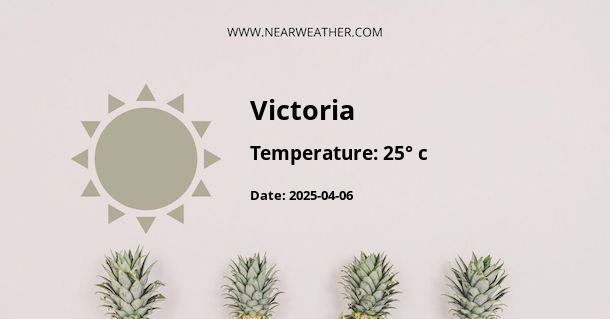Climate and Weather in Victoria, GD
Victoria, GD, is known for its diverse climate and varying weather patterns throughout the year. Located in the southern part of Australia, Victoria experiences four distinct seasons, each offering its own unique weather conditions. Understanding the climate of Victoria is essential for residents, tourists, and businesses operating in the region.
Annual Temperature and Precipitation
Victoria, GD, has a temperate climate with warm to hot summers and mild to cool winters. The average annual temperature in Victoria ranges between 12°C and 23°C. The hottest months are typically January and February, with average highs of 25-30°C, while the coldest months are July and August, with average lows of 6-8°C.
As for precipitation, Victoria experiences an average annual rainfall of around 600-800 millimeters. The wettest months are usually during winter, from June to August, while the summer months from December to February are relatively drier.
Seasonal Weather Patterns
Each season in Victoria brings its own distinct weather patterns, making it essential to understand what to expect throughout the year.
Summer (December to February)
Victoria's summer is characterized by warm to hot temperatures, with occasional heatwaves pushing the mercury above 40°C. This season is relatively dry, with occasional thunderstorms bringing short but heavy downpours. It is important to stay hydrated and seek shade during the hottest days.
Autumn (March to May)
Autumn in Victoria brings milder temperatures, making it a popular time for outdoor activities. The weather during this season is generally pleasant, with mild and stable conditions, although occasional winds can bring cooler spells.
Winter (June to August)
Winters in Victoria are cool and wet, with occasional frosts in the mornings especially in the southern parts. Rainfall is more frequent during this season, and snowfall is not uncommon in the alpine regions, attracting ski enthusiasts to the state's mountain resorts.
Spring (September to November)
Spring in Victoria is characterized by mild and changeable weather. It is a season of transition, with temperatures gradually warming up and rainfall becoming less frequent as the season progresses. This is also the time when the state's diverse flora bursts into bloom, creating stunning landscapes.
Extreme Weather Events
Victoria, GD, is susceptible to various extreme weather events, including heatwaves, bushfires, and storms. The state has experienced some of the most severe bushfires in Australia's history, with devastating impacts on communities and the environment. Understanding the risks associated with extreme weather events and being prepared is crucial for residents and visitors alike.
Climate Change and Sustainability
Like many other regions around the world, Victoria is not immune to the impacts of climate change. Increasing temperatures, changes in rainfall patterns, and more frequent extreme weather events are some of the observed effects. The Victorian government and various organizations are actively working on sustainability initiatives and adaptation strategies to mitigate the impact of climate change on the state's environment and communities.
Conclusion
Victoria, GD, offers a rich tapestry of weather and climate throughout the year, from warm summers to cool winters, and everything in between. Understanding the seasonal variations and being prepared for potential extreme weather events are essential for all those living in or visiting the region. With ongoing efforts in climate change adaptation and sustainability, Victoria is poised to meet the challenges of a changing climate while continuing to offer its residents and visitors a diverse and beautiful natural environment.
A - Victoria's Latitude is 12.190210 & Longitude is -61.706772.
A - Weather in Victoria is 28° today.
A - Climate Conditions in Victoria shows clear sky today.
A - Humidity in Victoria is 77% today.
A - Wind speed in Victoria is 26.89 km/h, flowing at 93° wind direction. today.
